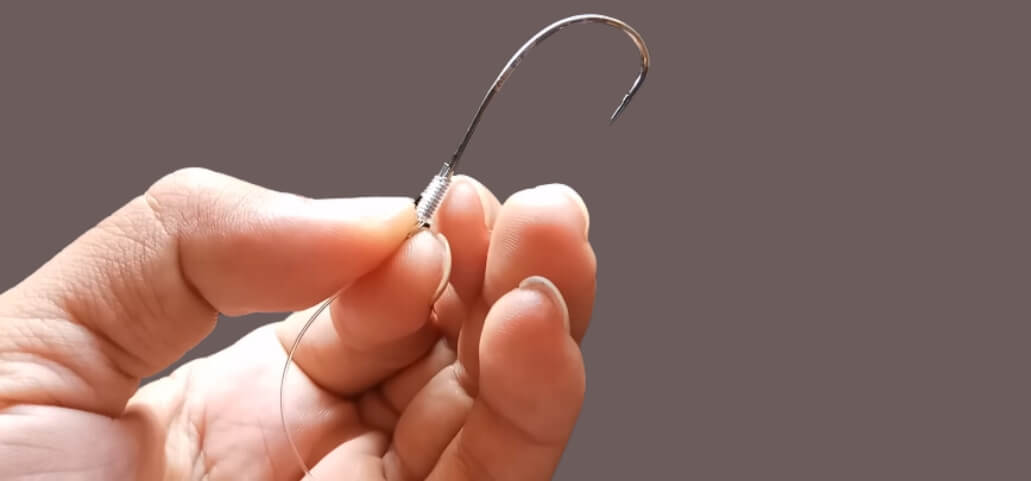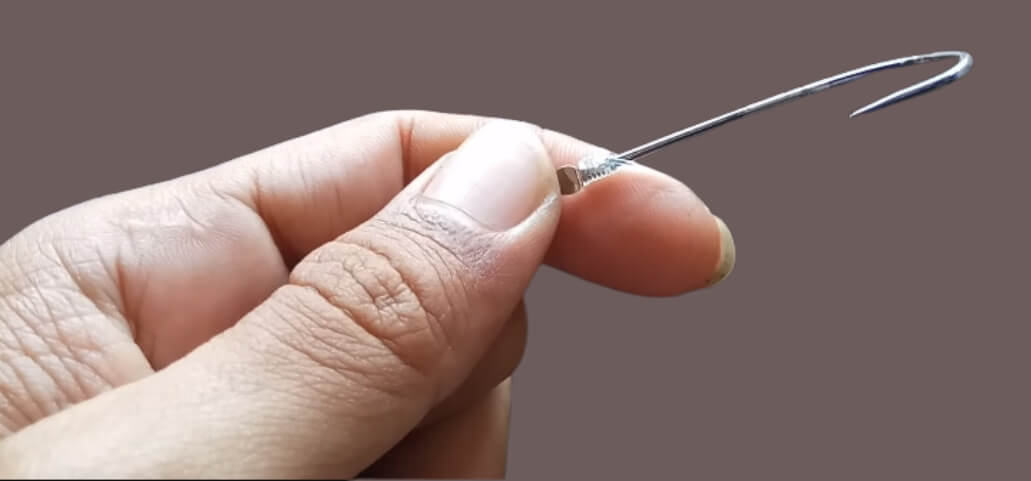Are you ready to learn how to tie a hook on fishing line like a pro? One of the most basic fishing abilities is knowing how to tie a hook into your line. A securely tied hook not only increases your chances of landing a catch but also prevents the heartbreaking loss of a fish due to a poorly tied knot. We’ll take you step-by-step through the process of tying a hook in this extensive guide, so you’ll be ready for your next fishing trip. Before we dive into the process of how to tie a hook on fishing line, let’s take a look at the basic tools you’ll need.
Understanding Fishing Knots
A successful fishing excursion depends on selecting the appropriate fishing knot. Certain knots are stronger than others, and some are more appropriate for particular fish species or fishing techniques. A few of the most often used fishing knots are as follows:
- Improved Clinch Knot: A common and adaptable knot that performs well with fluorocarbon and monofilament lines.
- Palomar Knot: Known for its strength and ease of tying, the Palomar knot is a favorite among anglers.
- Uni Knot: This knot is excellent for joining lines of different diameters and can be used for attaching hooks, lures, or leaders.
- Snell Knot: Ideal for attaching hooks to the line, the Snell knot provides a direct pull on the hook, increasing its effectiveness.
- Trilene Knot: Like the enhanced clinch knot, the Trilene knot is renowned for its dependability and strength.
Think about things like the kind of fishing you’ll be doing, the species of fish you’re targeting, and the fishing conditions you’ll face when selecting a knot.
Step-by-Step Guide to Tying a Hook on Fishing Line

Now that you have a basic understanding of fishing knots, let’s dive into the process of tying a hook on your fishing line. For a trustworthy and safe knot, adhere to following instructions:
Preparing the Line:
- Cutting the Line to the Desired Length: Use a sharp pair of scissors or a line cutter to trim your fishing line to the appropriate length for your fishing setup.
- Straightening the Line: To ensure a smooth knot-tying process, straighten out any curls or kinks in the line by gently pulling it between your fingers.
Choosing the Right Hook:
- Understanding Hook Sizes: Hooks come in various sizes, typically ranging from the smallest (size 32) to the largest (size 1). Select a hook size based on the size of the bait you plan to use and the size of the fish you are aiming for.
- Selecting the Appropriate Hook for the Fish Species: Different fish species require specific hook types and sizes. Research the fish you’re after and choose a hook that maximizes your chances of success.
Tying the Knot:
- Step 1: Inserting the Line Through the Eye of the Hook: Thread the fishing line into the eye of the hook, leaving enough line to work with.
- Step 2: Forming a Loop: Double back the line, creating a loop that overlaps the standing line.
- Step 3: Wrapping the Line Around the Main Line: Take the end of the line and wrap it around the standing line, making several turns (usually 5-7, depending on the knot).
- Step 4: Passing the End Through the Loop: The line’s end should be passed through the loop made close to the hook’s eye.
- Step 5: Tightening the Knot: To tighten the knot, tug the tag end while holding the standing line and the hook. Verify that the knot fits tightly against the hook’s eye.
Trimming the Excess Line:
Once your knot is securely tied, use your scissors or line cutter to trim the excess line (tag end) as close to the knot as possible without compromising its integrity. A neat and tidy knot not only looks professional but also minimizes the chances of the line getting snagged on debris or vegetation.
How to Tie a Clip on Fishing Line

In some cases, you may want to use a clip to quickly change lures or hooks without having to tie a new knot each time. To do this:
- Tie your preferred knot to the eye of the clip, following the steps outlined above.
- Tie your lure or hook onto the clip’s opposite end.
- When you want to change your setup, simply remove the hook or lure from the clip and replace it with a new one.
How to Tie a Hook on Braided Fishing Line
Tying a hook on a braided fishing line follows the same general steps as tying on monofilament or fluorocarbon line. However, because the braided line is thinner and more slippery, you may need to modify your knot or take extra care to ensure it’s securely fastened.
One popular knot for braided lines is the Palomar knot. To tie this knot:
- After doubling your braided line, insert the loop through the hook’s eye.
- Using the doubled line, tie a basic overhand knot by passing the hook through the loop.
- To tighten the knot, pull the standing line; then, cut off any extra line.
How to Tie a Hook on a Fishing Line for Bass
The same knots described previously, like the Palomar knot or the improved clinch knot, can be used when bass fishing. The key is to choose a knot that is strong enough to withstand the powerful fights that bass are known for.
Another important consideration when tying a hook for bass fishing is the size of the hook. Bass have large mouths, so you’ll typically want to use hooks ranging from size 1/0 to 4/0, depending on the size of the bass you’re targeting and the type of bait you’re using.
Tips for Ensuring Knot Strength and Reliability
- Always moisten the line with saliva or water before tightening the knot. This will lessen resistance and assist in avoiding line damage.
- Make sure the knot is tightly secured against the eye of the hook, lure, or clip.
- As near to the knot as you can without weakening it, cut off any extra lines.
- Before you get out on the lake, test your knots by pulling on them to make sure they are sturdy and secure.
- Practice tying different types of knots at home before heading out for a fishing trip. You’ll become more proficient and self-assured when tying on the water with this.
Conclusion
Learning how to tie a hook on fishing line is an vital ability for any angler. By mastering the techniques outlined in this guide, you’ll be well on your way to becoming a confident and successful fisherman. Keep in mind that practice makes perfect, so don’t give up if your initial tries don’t turn out perfectly. With practice, you’ll get a sense of which knots fit certain scenarios better than others. Keep experimenting, refining your technique, and, most importantly, enjoying your time out on the water.
Frequently Asked Questions
Q1: How to tie a hook on fishing line for beginners?
Answer: It is advisable to start with basic knots like the Palomar knot or the enhanced clinch knot if you are just getting started. These are easy to learn and highly reliable.
Q2: Why is it important to test your knots before fishing?
Answer: You can be sure your knots are sturdy enough to support the weight and force of a fish by testing them. It’s better to fix any potential issues before getting out on the water.
Q3: Can I use the same knot for all types of fishing line?
Answer: Some knots work well with different types of lines, while others are specific to certain types. Make sure you research and practice the appropriate knots for your chosen fishing line.
Q4: What is the strongest knot for tying a hook?
Answer: The Palomar knot and the improved clinch knot are both known for their strength and reliability. However, the best knot for you will depend on factors such as the type of line you’re using and your personal preference.
Q5: Do I need to use a different knot for braided line?
Answer: While you can use the same knots for braided line as you would for monofilament or fluorocarbon, some anglers prefer knots specifically designed for braided line, such as the Palomar knot or the double uni knot.
Q6: How often should I replace my hooks?
Answer: Replace your hooks whenever they become dull, rusty, or bent out of shape. Effective hooking and landing of fish depends on having sharp, well-maintained hooks.
Disclaimer: The information provided in this article is for general guidance only. Learning how to tie a hook on fishing line is an essential skill for any angler. By following the general steps outlined in this guide and practicing different knots, you’ll become more confident and efficient at tying hooks for various fishing situations. Prior to getting out on the water, always test your knots, and replace them as needed.
Personal Experience: I still recall my initial attempt at tying a hook into a fishing line. I was a young boy, out fishing with my grandfather, and I was determined to learn how to do it myself. After several frustrating attempts and a lot of patience from my grandfather, I finally managed to tie a somewhat decent knot. It wasn’t nice, but it held, and I was really proud of myself.
Over the years, I’ve honed my knot-tying skills, and I’ve come to appreciate the importance of a well-tied hook. It’s a skill that has served me well on countless fishing trips, from lazy afternoons at the local pond to adventurous outings on the open sea. Mastering the art of tying a hook has not only made me a better angler but has also given me a deeper connection to the sport I love.
Why Trust Our Content?
At [Your Website], we combine our passion for fishing with a commitment to delivering reliable and practical advice. Our experienced team offers insights gained from countless hours of fishing, aimed at helping both beginners and seasoned anglers improve their skills. Our content is carefully researched and crafted to ensure you receive trustworthy information based on real-world experience and a deep love for fishing.

